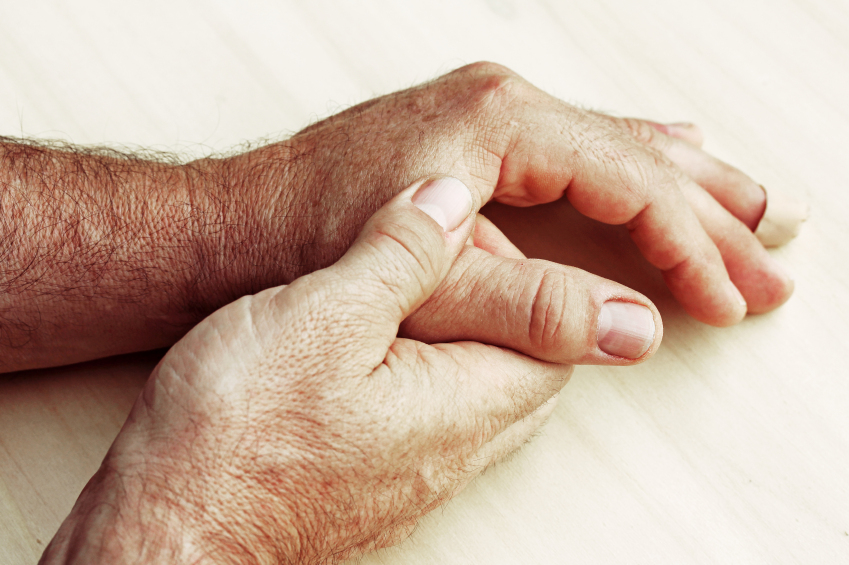Try to open a jar without using your thumb, and you’ll experience some of the frustration of basilar (or basal) joint arthritis. This arthritis, which occurs at the base of the thumb, is not only painful but limiting because the thumb is used every day to complete basic tasks, from eating and dressing to turning a key and gripping a doorknob. While such difficulty may easily be dismissed in its early stages as an annoyance of aging, patients don’t have to endure the suffering, says James D. Baker, M.D., of OrthoCincy. Getting help early is easier, but even late-stage disease can be treated successfully, he reports.
A tire “out of balance”
The thumb is similar to the shoulder in its range of motion.
“It requires soft tissue stability rather than bony stability,” Dr. Baker explained. As the soft tissue degenerates, the main ligament starts to wear out and stretch, and motion becomes abnormal.
“It’s like a tire out of balance,” he said. “It wears unevenly. That uneven wear is the arthritis that develops.”
Non-surgical treatments
A “typical” patient with early basilar joint arthritis is a woman in her mid-40s or 50s, noted Dr. Baker. Symptoms start mildly, and treatment follows a ladder-style progression. “Every rung of the ladder is more and more aggressive,” he said, and includes the following:
- Supplements
Baker recommends glucosamine/chondroitin for early disease. At its worst, the supplements will not change your situation, but won’t cause any additional harm. Unfortunately, if they work, the supplements will become part of your daily routine. A three-month trial is required to decide whether the treatment is working. - Acetaminophen
After supplements, treatment with acetaminophen is recommended. Since it’s present in many other prescription and over-the-counter drugs, you can get too much. Current FDA regulation is 4,000 mg a day of oral Tylenol, and Dr. Baker typically recommends up to that limit. Monitoring by a physician is recommended to prevent complications, and individuals with certain underlying conditions, such as severe liver disease, should not take acetaminophen. - Anti-inflammatory medications
The next rung of the ladder involves anti-inflammatory medication, which includes Aleve, Motrin, Naprosyn, and COX-2 Inhibitors such as meloxicam (Mobic). These medications can cause potentially harmful side effects so proper follow-up care by a primary care physician is a must. - Soft brace
A soft brace may be recommended for patients who need further relief. Certain braces can be worn all day, offering a sense of stability without restricting motion. It can be worn even while knitting or performing activities requiring great dexterity. - Rigid brace
A sturdy, hard plastic brace may be custom-made by a therapist to hold the thumb away from the palm while you sleep, which helps to fend off next-day symptoms. This brace also prevents the thumb from being drawn into the palm, which can occur as the arthritis progresses. - Cortisone Injections
Cortisone injections are offered in a three-part series, but the best chance of relief is the first shot. They are likely to wear off eventually, leaving patients considering surgical options as a next step.
Surgical options for advanced disease
Patients who see Dr. Baker with more advanced or severe disease are typically older and have endured years of pain before seeking help. For these patients, surgery offers a fairly good chance of permanent relief. Younger patients may require repeat surgery but this situation is rare.

